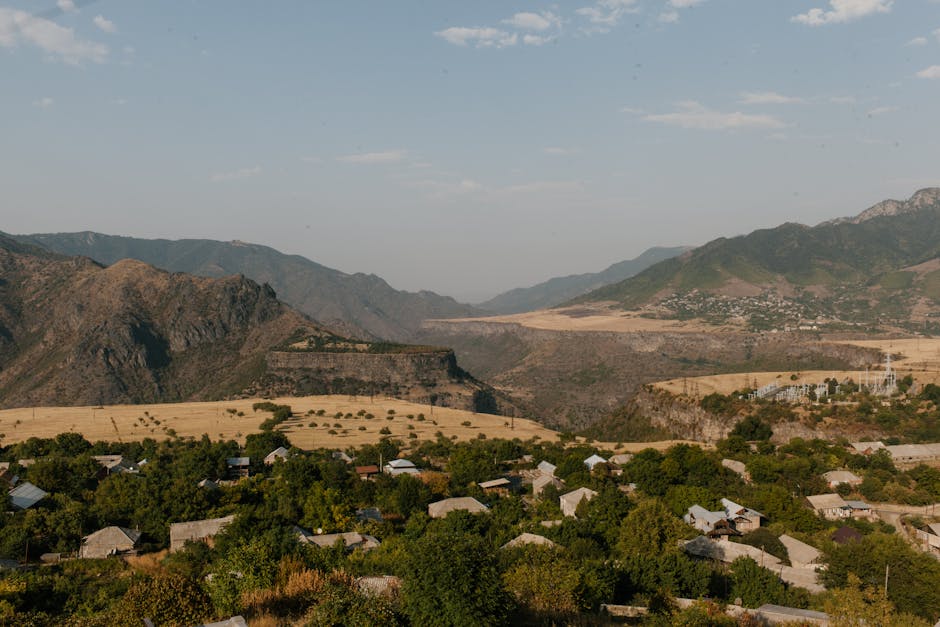Key Takeaways
- Hamlets and villages are both small human settlements, but they differ significantly in population, infrastructure, and administrative status.
- A hamlet typically lacks major public services and formal governance, whereas a village often possesses basic amenities and local administration.
- The distinction between a hamlet and a village can vary by country, influenced by historical and legal interpretations.
- Villages generally serve as focal points for rural life, commerce, and community events, unlike hamlets which tend to be more isolated.
- Understanding these differences is essential for urban planning, rural development, and demographic studies.
What is Hamlet?

A hamlet is a small settlement, typically smaller than a village and lacking its own church or governing body. It often consists of a few houses clustered together in rural or semi-rural areas.
Population and Physical Size
The population of a hamlet is usually very limited, often comprising just a handful of families or households. In many cases, the number of inhabitants rarely exceeds a few dozen individuals, creating an intimate community atmosphere.
Hamlets tend to cover a small geographic area, with homes clustered closely together or spread along a single lane. This compactness is often a function of both historical land use patterns and the lack of need for extensive infrastructure.
In many regions, hamlets emerge in areas where agricultural land is abundant but population growth is restricted by geography or economic factors. For example, English rural landscapes are dotted with hamlets, each reflecting centuries-old settlement patterns.
Unlike larger settlements, hamlets usually do not expand significantly over time unless external factors, such as improved transportation, encourage growth. Their small size makes them particularly sensitive to changes in local economic conditions.
Infrastructure and Services
Hamlets typically lack public infrastructure such as schools, medical centers, or retail shops. Residents often rely on neighboring villages or towns for essential services and amenities.
The absence of amenities like paved roads, public transportation, or utility networks is common in hamlets, especially in remote or developing regions. This can pose challenges for daily life, particularly for the elderly or those without personal vehicles.
Access to clean water, sewage systems, and reliable electricity may be limited or non-existent in some hamlets. Such infrastructural gaps can influence residents’ quality of life and opportunities for economic advancement.
Emergency services, like fire and police protection, are typically provided by nearby larger communities rather than being based within the hamlet itself. This reliance on external support highlights the hamlet’s peripheral role in regional planning.
Governance and Administrative Status
Hamlets generally lack any form of self-government or formal administrative recognition. They are often governed as part of larger municipal or parish structures, with decision-making centralized elsewhere.
Legal definitions of a hamlet vary, but most jurisdictions do not grant them autonomy or official status. This means that residents have limited direct influence over local policies or development projects.
In places like Canada and the United Kingdom, hamlets are administratively managed by rural municipalities or parishes, which oversee land use, zoning, and public works. Residents may participate in public meetings, but formal representation is typically minimal.
The absence of a governing body can foster a strong sense of neighborly cooperation in hamlets, as residents often rely on each other for problem-solving and community initiatives. However, it also limits access to public funding and organized services.
Cultural and Social Dynamics
Hamlets often foster tight-knit social networks, with residents sharing close personal relationships and a collective identity. Informal gatherings, shared labor, and mutual assistance are common features of hamlet life.
Because of their small size, hamlets usually lack organized social institutions such as clubs, religious organizations, or schools. Social activities are often centered around private homes or the surrounding landscape.
In some cultures, hamlets are associated with traditional ways of life, including subsistence farming, artisanal crafts, or local folklore. These traditions may be preserved due to the relative isolation and slow pace of change.
Migration patterns can impact hamlets dramatically; the arrival or departure of a single family may alter the social fabric or economic viability of the settlement. This fluidity distinguishes hamlets from more stable village communities.
What is Village?

A village is a rural settlement larger than a hamlet, typically characterized by a stable population and basic infrastructure. Villages often serve as local centers of commerce, governance, and social life.
Demographics and Scale
Villages generally have populations ranging from several dozen to several thousand residents, depending on regional norms. This larger population base supports a broader range of activities, institutions, and services.
Physical size varies considerably, but villages usually occupy more land than hamlets, with housing, agricultural plots, and public spaces interspersed throughout the area. Some villages may even include small industrial or commercial zones.
Population growth in villages is often driven by natural increase, inward migration, or economic development. Expansion can lead to the emergence of new neighborhoods or the gradual transformation into towns.
In regions with high rural density, villages may be located close together, forming a network of interconnected communities. This proximity can facilitate trade, transportation, and cultural exchange.
Infrastructure and Public Services
Villages typically possess basic infrastructure such as primary schools, local clinics, or places of worship. These amenities are intended to meet the essential needs of residents and reduce dependence on distant urban centers.
The presence of paved roads, public transport links, and utility networks is more common in villages than in hamlets. These features enhance mobility, communication, and access to external markets.
Commercial establishments such as small shops, markets, or cafes often serve as focal points for village life. These businesses support both economic activity and community interaction.
Local government investment in public works—such as water supply, waste management, and street lighting—helps to improve living conditions and attract new residents. Villages may also benefit from non-governmental projects or rural development programs.
Local Governance and Administrative Functions
Villages often possess some form of local government or administrative structure, such as a village council or elected head. This allows residents to participate in decision-making and manage communal resources.
Legal recognition as a village typically confers certain rights and responsibilities, including eligibility for government funding or the authority to enact local ordinances. This formal status differentiates villages from smaller settlements like hamlets.
Administrative boundaries of villages are usually clearly defined, and they may be grouped into larger jurisdictions for purposes of regional planning and statistical analysis. Village leadership acts as a liaison between residents and higher levels of government.
Public meetings, elections, and other civic activities are common in villages, fostering a sense of engagement and collective responsibility. These mechanisms help ensure that local priorities are addressed and resources are distributed fairly.
Role in Rural Society and Economy
Villages often serve as economic hubs for surrounding rural areas, providing markets for agricultural products and access to basic goods and services. Their relative size and infrastructure enable them to support small-scale industry or handicrafts.
Social institutions such as schools, religious centers, and community halls play a central role in village life, offering venues for education, worship, and cultural events. These facilities strengthen social bonds and reinforce collective values.
Festivals, fairs, and public celebrations are often organized at the village level, attracting visitors from nearby settlements and promoting economic activity. Such events can also reinforce regional identity and shared traditions.
Villages frequently act as administrative centers for surrounding hamlets or dispersed farmsteads, coordinating development projects and delivering public services. This centrality enhances their importance within the rural landscape.
Comparison Table
The following table highlights distinct aspects that differentiate hamlets and villages in the context of rural settlements, focusing on practical realities and community characteristics.
| Parameter of Comparison | Hamlet | Village |
|---|---|---|
| Typical Number of Residences |